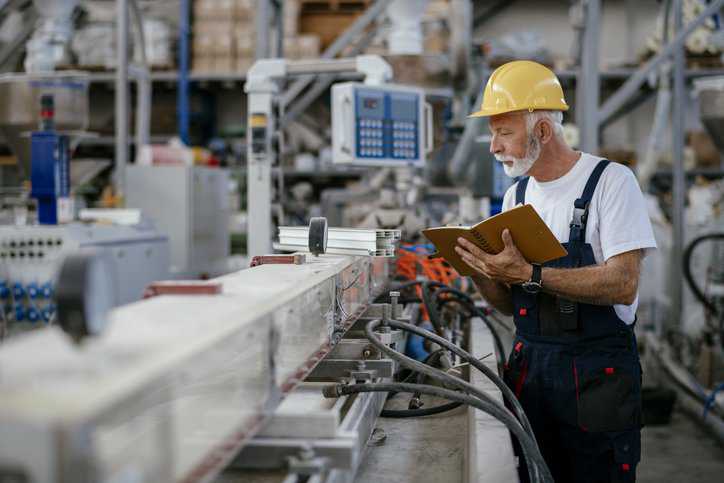IEC 62061 Ed. 2.0 b:2021—Safety Of Machinery

The automated control system is now considered a vital part of the infrastructure that helps ensure the smooth running of plants, pumping stations, utilities, and processing facilities. As a result of automation, safety-related control systems (SCS) of machines play an increasing role in the achievement of overall machine safety. IEC 62061 Ed. 2.0 b:2021— Safety Of Machinery – Functional Safety Of Safety-Related Control Systems specifies requirements for the design and implementation of safety-related control systems of machinery.
What Is a Safety-Related Control System (SCS)?
IEC 62061 Ed. 2.0 b:2021 defines a machine control system as “a system that responds to input signals from the machinery and/or from an operator and generates output signals causing the machinery to operator.” This includes input devices and final elements. The standard further specifies that a safety-related control system (SCS) is “part of the control system of a machine which implements a safety function by one or more subsystems,” preventing a hazardous condition from occurring. These machine functions are critical because they reduce the risk presented by the machine to an acceptable level determined by the risk assessment.
A SCS can be a separate dedicated system or it may be integrated with the normal machine control system. The complexity of an SCS will vary from a typical simple system, such as a guard door interlock switch and emergency stop switch connected in series to the control coil of power contactor, to a compound system comprising both simple and complex devices communicating through software and hardware.
What Is IEC 62061 Ed. 2.0?
IEC 62061 Ed. 2.0 b:2021 specifies requirements and makes recommendations for the design, integration, and validation of safety-related control systems (SCS) for machines. This standard is applicable to control systems used—either singly or in combination— to carry out safety functions on machines. These machines are not portable by hand while working. IEC 62061 Ed. 2.0 b:2021 applies to the risks arising directly from the hazards of the machine itself or from a group of machines working together in a coordinated manner. It is concerned only with functional safety requirements intended to reduce the risk of hazardous situations.
IEC 62061 Ed. 2.0 b:2021 is intended for use by machinery designers, control system manufacturers and integrators, and others involved in the specification, design and validation of an SCS.
What Is IEC 62061 Amd.1 Ed. 2.0?
IEC 62061 Amd.1 Ed. 2.0 b:2024 specifies amendments to IEC 62061 Ed. 2.0 b:2021. These amendments primarily include specifications and clarifications on wording. It also includes a new formula for the section “estimation of safe failure fraction (SFF).”
Machinery Functional Safety
Most machinery relies both on physical safety measures (e.g., guards and warning notices) and on control system functions to ensure that it provides the safety features/functions (e.g., emergency stops and guard interlocks) required to maintain the safety of the operator and others. Machinery that has safety related control functions must operate in a way that ensures that the equipment functions in a safe manner both under normal operating conditions and in the event of certain faults. The ability of the machine to correctly deliver these safety related functions is known as “functional safety.”
Why Would a Machine Control System Fail?
Control systems require careful planning and design to deal with every foreseeable situation, including failures, whenever feasible. Whether it is electric shocks or injuries resulting from operating errors or unforeseen machine restarts, machines and systems pose a wide range of serious hazards to people, equipment, and the environment. Control systems may be susceptible to failure as a result of component failure, poor system design, or electrical interference.
Where such failures could cause a dangerous situation to occur, the equipment must be adequately specified, designed, and constructed to ensure an adequate level of safety is maintained. This risk is present throughout the entire machine life cycle, from production to disassembly. Factors such as how the machine control system is monitored, alarm system capabilities, availability of operators, process uptime requirements, probability of occurrence, possible consequences, process safety, etc., must always be considered.
IEC 62061 Ed. 2.0 b:2021— Safety Of Machinery – Functional Safety Of Safety-Related Control Systems is available on the ANSI Webstore as well as in these Standards Packages: IEC 60204-1 / IEC 62061 / ISO 12100 – Safety of Machinery Package, IEC 62061 / ISO 13849-1 / ISO 13849-2 – Machine Safety Control Systems Package, and ISO 13849 / IEC 60204-1 / IEC 62061 / ISO 12100 – Electrical Safety of Machinery Package.






